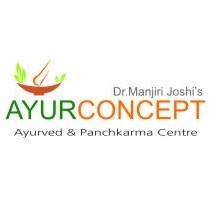
In my last blog I highlighted two main points that are relevant to this blog and I am repeating those here to refresh your memories:
- Most patients come to me when the ailment has become chronic and after having tried various modern treatments
- Treatments like Vaman or Virechan have numerous benefits
To highlight these two points today I am putting forth a patient case:
Mr. Kulkarni (Name changed for confidentiality) is 28 year old. He has been suffering from scalp and skin Psoriasis for over 5 years. He had Itchy scaly patches all over his body but more on the back, legs and hands. The same legions were seen on his forehead as well as on the head region. Mr. Kulkarni naturally was under tremendous stress which in turn was also affecting his career. He had taken modern medicine treatment locally and internally that included steroids. This treatment was successful in as much as it gave him a temporary relief.
After he approached me seeking my professional advice and help, I started with internal medicine and followed it up with ‘Virechan’ and ‘Takradhara’ treatments. With local takradhara, the legions on his forehead and head reduced drastically. The itching and redness had almost gone. The takradhara treatment addressed his stress levels and anxiety and also improved his sleep pattern. After virechan, the legions on his body also reduced significantly with reduction in redness and itching. Virechan also further improved his skin texture and tone as well as his appetite.
Now Mr. Kulkarni is taking medicines internally, having already achieved 90% overall improvement. I have advised him to repeat the panchkarma treatment of virechana and takradhara in the sharad ritu besides rasaayan treatment to retain health.
Now dear readers, I am sure that you have understood the efficacy of this ancient Indian wisdom of Ayurved which is Panchkarm. I am also sure that you would not harbour any misgivings about certain panchkarm treatments. I am also sure that at least some of you will not allow your ailment to become chronic (Old) and then come to me and say that Ayurvedic treatment shows delayed effects.
I leave you with an assurance that I shall be discussing more such cases especially some of my educated and more urbane patients to drive the advantages of Ayurved home.
Dr. Manjiri Joshi, Pune, India
http://panchkarma 4 @ayurconcept
www.ayurconcpet.com
919403360452
